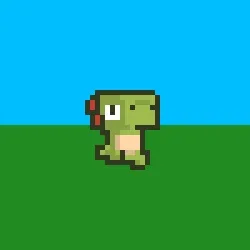Animation
Sprite animation is a technique used in 2D games and other visual applications where a series of images, or “sprites,” are displayed in quick succession to create the illusion of motion. This method is commonly used for animating characters, objects, and other dynamic elements within a game. Each individual image in the sequence represents a frame, and by rapidly cycling through these frames, we simulate continuous motion, much like a flipbook.
Why Sprite Animation?
Section titled “Why Sprite Animation?”Sprite animation is popular because it is both efficient and flexible for 2D games. By using sprites:
- You can create complex visual effects without the need for 3D rendering or physics.
- Memory usage is reduced, as a single sprite sheet is loaded once and reused multiple times.
- It allows for quick prototyping of game mechanics and visual feedback.
How Sprite Animation Works
Section titled “How Sprite Animation Works”At the core of sprite animation is the concept of frames and timing. An animation consists of a sequence of frames, each representing a specific visual state of the object. By displaying each frame for a short duration, and then switching to the next frame, we create the illusion of movement.
For example, consider a character running. You might have a sprite sheet containing different poses of the character mid-run. Each pose is a frame, and as you cycle through them, it looks like the character is running.
Advanced Techniques: Tweening
Section titled “Advanced Techniques: Tweening”While basic sprite animation involves switching between frames at fixed intervals, more advanced animations can incorporate tweening. Tweening interpolates between two frames smoothly, creating more fluid transitions. This is especially useful when working with more complex animations such as scaling, rotation, or opacity changes.
